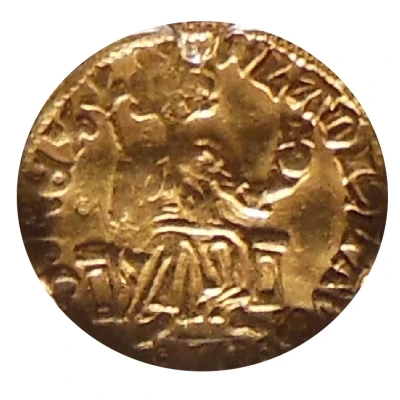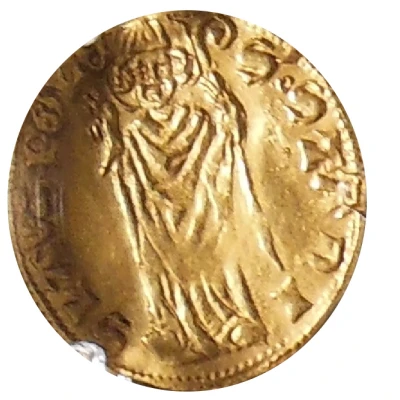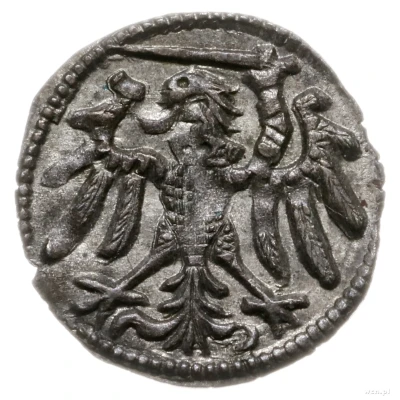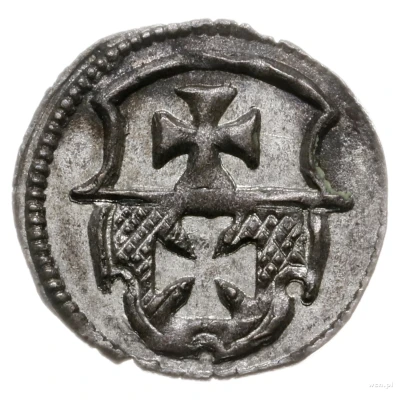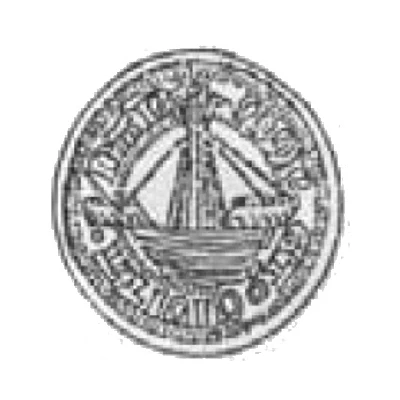
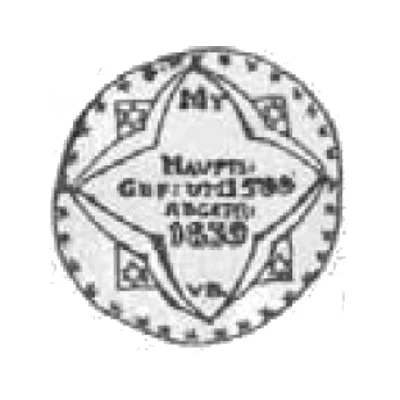

Półrosenobel gdański - Casimir IV Jagiellon Gdańsk ND
| Gold | - | - |
| Issuer | Kingdom of Poland |
|---|---|
| King | Casimir IV Jagiellon (Kazimierz IV Jagiellończyk) (1446-1492) |
| Years | 1446-1492 |
| Value | Półrosenobel = 810 Denarów |
| Currency | Grosz / Groschen (1306-1528) |
| Composition | Gold |
| Shape | Round (irregular) |
| Technique | Hammered |
| Demonetized | Yes |
| Updated | 2024-10-07 |
| Numista | N#250627 |
|---|---|
| Rarity index | 100% |
Reverse
Script: Latin
Comment
Note: According to modern catalogues, this is a coin made by the mint of Gdańsk duringthe reign of Kazimierz Jagiellończyk between 1447 and 1492. While the archeologists found some old dies in the XIX century, modern specialists like T. Kalkowski attribute it to either a rare or unknown type of Thaler minted during the reign of Zygmunt II August (1548-1572) or a reproduction. The reason for that were the unclear circumstances these dies were found in, as the archeologists in the XIX century didn't bother to explain a lot.
While the coin is classified as a contemporary circulating coin, the only photo mentioned in e.g. the Kopicki catalogue is a photo with some kind of modern writing on the back, primarily used for medals and other exonumia.
The original Rosenoble coins were minted in XV century England during the reign of Edward IV. The original weight was 7,77g and the diameter was 37mm, but the Halfrosenobles had a diameter of 25mm. This is interesting considering that different catalogues mention varying sizes. According to Dutkowski, they measured 23mm, but Czapski says that they were 26mm big. It's likely that the writers of catalogues didn't use original coins for their data, using XIX century silver reproductions instead.
The years the mintage is attributed to is also odd. While the Rosenobles were struck from 1464 onwards, other countries, like the Netherlands or Denmark, only started reproducing them in the XVI century, meaning that they weren't well known before that. This makes it unlikely that the city started producing then this quickly. And despite England being an important trading partner for the city, most big transactions used Hungarian ducats. The reason for that was the high purity of gold, which would render the possible reproduction obsolete.
Another coin that would be similar to the halfrosenoble could be an English noble, a gold coin slightly lighter than a rosenoble, with a diameter of 34mm and a weight of 6.47g. This would also fit a bit more historically, considering these coins were first struck by Edward III in 1340, but this also remains unlikely.
Assuming that this coin actually exists, modern numismatist are shifting the possible mintage a bit more towards the present, from the reign of Kazimierz Jagiellończyk to the reign of Jan Olbracht (1492-1501) or Aleksander Jagiellończyk (1501-1506). But then the seal/emblem of the city would be outdated, as it was changed during the reign of Kazimierz Jagiellończyk.
We don't know any original coins of that type and from that time. Most assumptions and data were gathered from restrikes from the XIX century, just like the one pictured below. This is why this coin remains a mystery until today and as long as we don't find any original examples, it will stay that way. The whole mystery is only made even more conplicated by the odd name, no known examples and contradicting data.
XIX century restrike in silver - (it could be counterfeit or fantasy issue coin)
Pictures: © B. Haczewska
